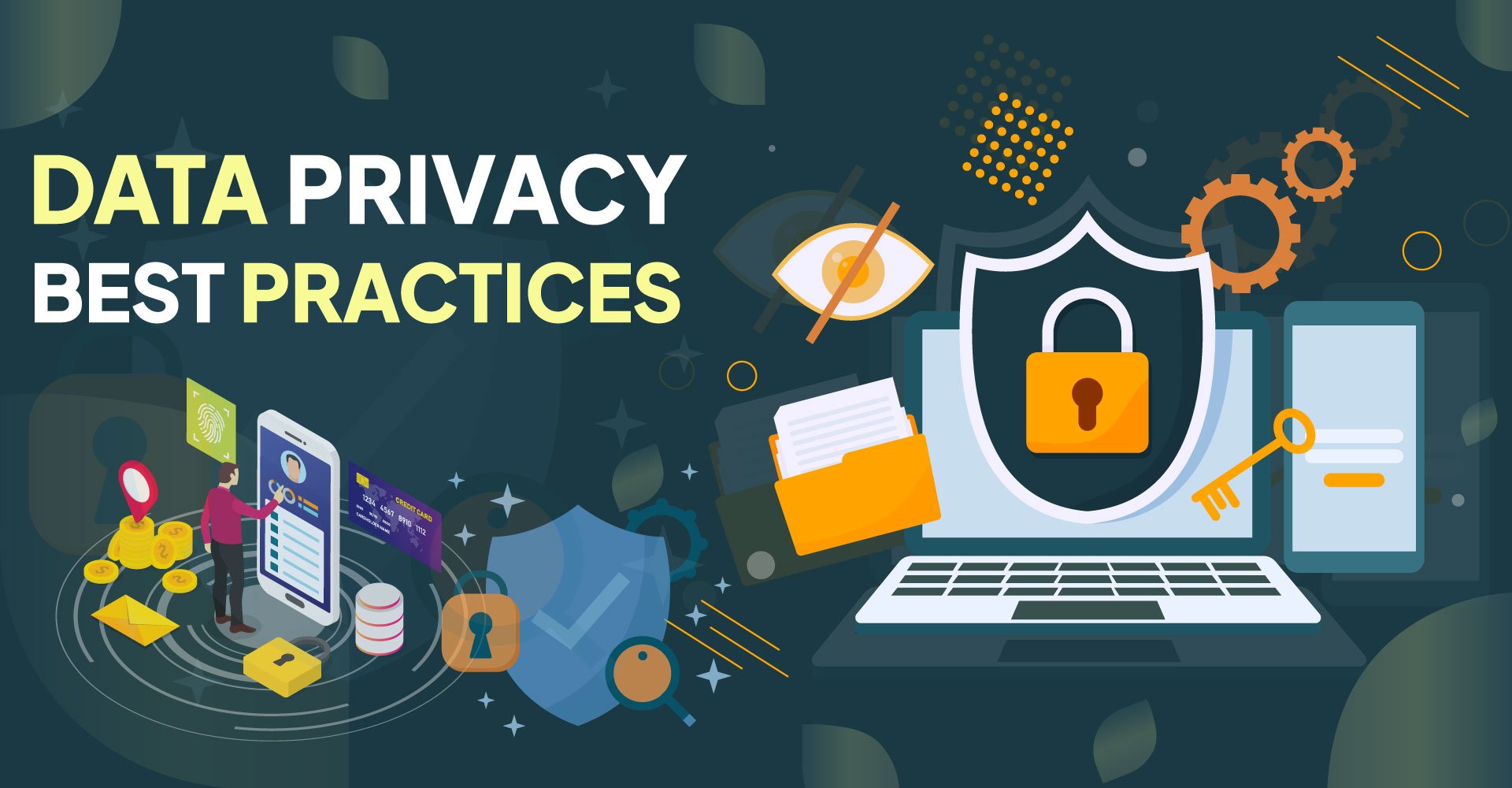25 Essential Data Privacy Best Practices in 2023

Table of Contents
Businesses have a legal responsibility to protect customer information and prevent it from falling into the wrong hands. And that's more important than ever before with the amount of information and transactions that take place on the internet.
A failure to invest in data privacy best practices can land your firm in a lot of trouble. Fines for data breaches and non-compliance with data privacy laws can be in the billions of dollars. That's certainly not a sum any company would like to forfeit.
The following 25 essential data privacy best practices outlined in this article can help you stay protected. Let's take a closer look to protect your business from expensive fines and damaging news headlines.
1. Understand What Data You Collect
To start, take a step back and determine what data is captured by your company and whether any of that can be deemed non-essential. For the data that's important, what can be classified as personally identifiable information? These are essential questions you need to ask so you can better understand how data is being used in your business, and what vulnerabilities are present.
2. Limit Data Access
Only the people in your organization that need to have access to data should be able to do so. The more exposure you give to personal information, the more you increase your risk for a data breach or theft.
3. Invest in Data Encryption
Deter data theft by encrypting critical consumer information. Options like converting content from plaintext to ciphertext makes data virtually unusable even if stolen — thereby reducing a thief’s desire to steal information.
4. Establish Data Approval Layers
Restricting data access makes it easier for you to pinpoint and isolate how data leaks happen. It's good security practice to only approve data access after a thorough review and one that requires sign-off from senior decision makers.
5. Regularly Review Third-Party Software
Aging software systems represent weak points in your overall data security plan. Make it a point to routinely analyze systems to ensure that any data hand-offs are encrypted between systems and that any software with outdated security protocols is either updated or replaced.
6. Invest in Anti-Malware Apps
Malware can come from anywhere. Those random forwarded emails, a program that gets downloaded by accident, even simply visiting a website with an expired security certificate can all spell trouble. Make sure all devices — especially those with the ability to access to data — are loaded with the most up to date anti-malware software.
7. Establish a Data Usage Policy
Having a data protection policy is meaningless if your workforce isn’t entirely clear on the chain of command or how to properly access data. Create a clear policy with guidelines, and be sure to effectively communicate it not just to department heads — but all employees.
8. Don't Overlook Physical Security
Data protection is about more than VPNs and anti-malware. Physical security can include requiring logins to access sensitive information, using an NFC card to use on-site printers so you can log activity, and even cameras to monitor employee activity in all public spaces — including access to server rooms.
9. Schedule Security Training for All Employees
Employees are the weakest link in your security program. Don't overlook the importance of robust training just because some junior employees may not have access to all data. Likewise don’t assume that all department heads will share data security best practices with their subordinates. When in doubt, train everyone as part of your overall onboarding checklist.
10. Leverage the Power of 2FA
Yes, it can be a pain at times, but two-factor authentication (2FA) is one of the best ways to prevent unauthorized access to sensitive systems or get shut out of your account because of a hostile hacker takeover. Require all corporate systems to run on 2FA access and also routinely require passwords to be updated.
11. Overhaul Weak Passwords
A determined hacker can defeat a weak password with brute force attacks. Any old passwords that rely on short character strings, don’t incorporate capitals, numbers, and special characters, or use identifiable information are a recipe for disaster.
12. Shift to Secure Cloud Storage
Not every company can afford to keep sensitive data stored in on-site servers. If this sounds familiar, shift your data to the cloud. However, whatever system you use should offer the best security protocols to prevent data leaks and breaches.
13. Avoid Insecure Data Sharing
While convenient, USB drives and email sharing are some of the least protected ways to move sensitive information. Many emails lack data encryption support and a lost USB drive is a welcome gift to a potential hacker or data thief. Avoid the risk by shifting to secure file sharing systems instead.
14. Automate Software Updates
Failing to update software regularly increases your company’s exposure to potential data breaches. Whenever possible, automate those updates to occur automatically as often enough, those updates include security patches to protect against data theft or hacking.
15. Remove Old or Irrelevant Data as Needed
Once data no longer becomes relevant to your business’s core tasks, dispose of it properly. Keeping old data around is again another calling card for hackers and thieves. More importantly, routinely review data to ensure that anything irrelevant is swiftly removed. This will also keep you compliant with most data privacy regulations.
16. Perform Compliance Audits
There are countless data privacy regulations in the world, and technically your business is responsible for adhering to all of them. Have a dedicated team or outsourced vendor that reviews and ensures your business is following data protection expectations.
17. Keep an Eye on Outside Data Access
If you share data with outside vendors you’re still liable for any breaches that occur through their access. Likewise, if they access data that isn’t relevant to their business tasks, you’re liable for that as well. So, be sure you understand not only how third-party partners are accessing data, but that they’re only using it when necessary and treating it as sensitive information with the proper security protocols.
18. Beware of Phishing
Phishing scams can range from obvious Nigerian Prince angles to more sophisticated ones that mimic websites of legitimate companies. Don’t assume that all employees know how to spot them. Educate everyone on what to look out for including opening emails from unknown senders, clicking random links, and even pop-ups.
19. Only Use Secure WiFi Networks
Public and free WiFi networks are convenient, but they’re also a treasure trove for hackers. Remind employees to only use secure networks when accessing company files and to avoid attempting to access sensitive information on unvetted public networks unless they’re using a VPN.
20. Keep Passwords Fresh
Yes, remembering passwords is a pain. But using the same word or phrase over and over increases your risk of being hacked. Especially for any security access linked to privacy data, use fresh passwords that meet the necessary security protocols (i.e. longer phrases, alphanumeric, capitals, and special characters).
21. Leverage VPNs
VPNs are a great way to protect your overall network from would-be hackers. While you might think you only need this security protocol for your computers, don’t forget that printers on the local access network (LAN) that aren’t password protected or covered by a VPN are an easy entry point for data breaches.
22. Review Privacy and Cookie Policies for Accuracy
If you want to stay compliant with regulators, make sure whatever data usage is listed in your privacy or cookie policies accurately reflects how your business uses consumer data. The easiest way to get fined is because your data usage is technically outside the scope of policies published on your website.
23. Create Dedicated Compliance Contacts
Another major data privacy compliance requirement is that you need communication channels for consumers to request access to, amend, or request that their data be deleted. Create dedicated points of contact for this, as well as stand-alone email accounts to address these queries. Finally, be proactive in responding to emails as they arise.
24. Stay On Top of Data Privacy Laws
This can be a tough request for smaller businesses, but being a mom-and-pop shop or an enterprise of one isn’t an excuse for not following privacy regulations. If you can’t personally manage this, take advantage of tools like Enzuzo’s Privacy Policy Generator to ensure that your online presence meets with legal requirements for some of the more stringent privacy regulations in the world like GDPR, PIPEDA, and CCPA.
25. Don’t Forget Cookie Consent
These days regulators from various U.S. states as well as the European Union require that your business provide advance notice when you intend to use cookies for anything other than the most essential of tasks. This means you need a cookie consent banner. But depending on the territory, that banner may need to do different things. If you’re not well-versed in the varying requirements, Enzuzo’s Cookie Consent Banner Generator creates a compliant solution in minutes and can quickly be installed on your website.
Compliance is Critical for Corporate Success
No matter your business, if you rely on websites to interact with consumers, data privacy isn’t something you can ignore. More importantly, maintaining regulatory compliance is essential so you can avoid potentially hefty fines. However, it’s understandable that with so many competing regulations in the world, the average small to medium-sized business might not have an in-house legal counsel department that focuses solely on privacy regulation compliance.
Enzuzo is a turn-key solution that is also incredibly flexible, allowing businesses to leverage a customizable data privacy solution that maintains compliance while providing a robust set of tools. From managing data requests to creating privacy policies and cookie banners that address your business’s unique needs, Enzuzo is here to ensure that you can focus on your key business activities and not run afoul of privacy regulators from around the world.

Osman Husain
Osman is the content lead at Enzuzo. He has a background in data privacy management via a two-year role at ExpressVPN and extensive freelance work with cybersecurity and blockchain companies. Osman also holds an MBA from the Toronto Metropolitan University.